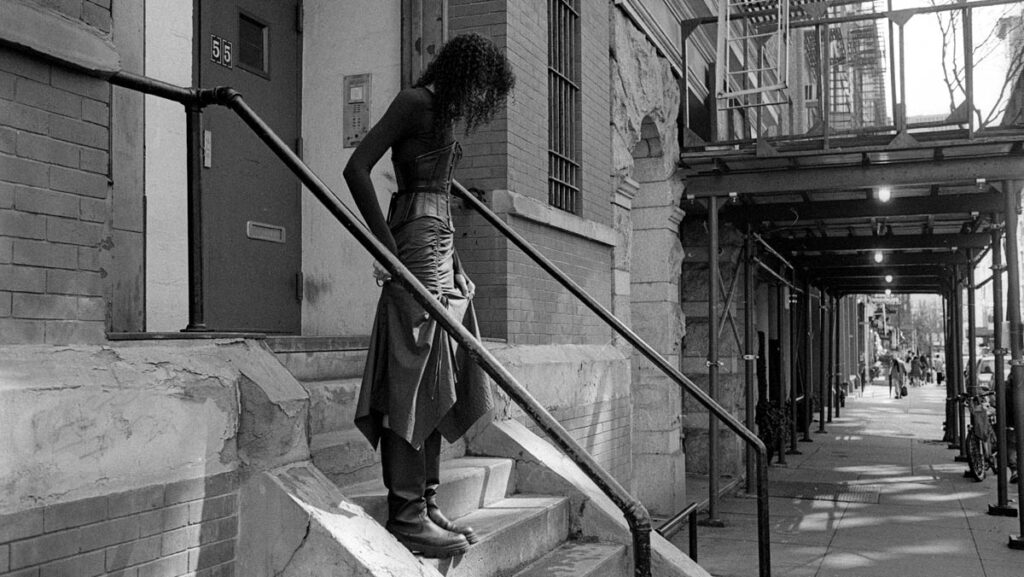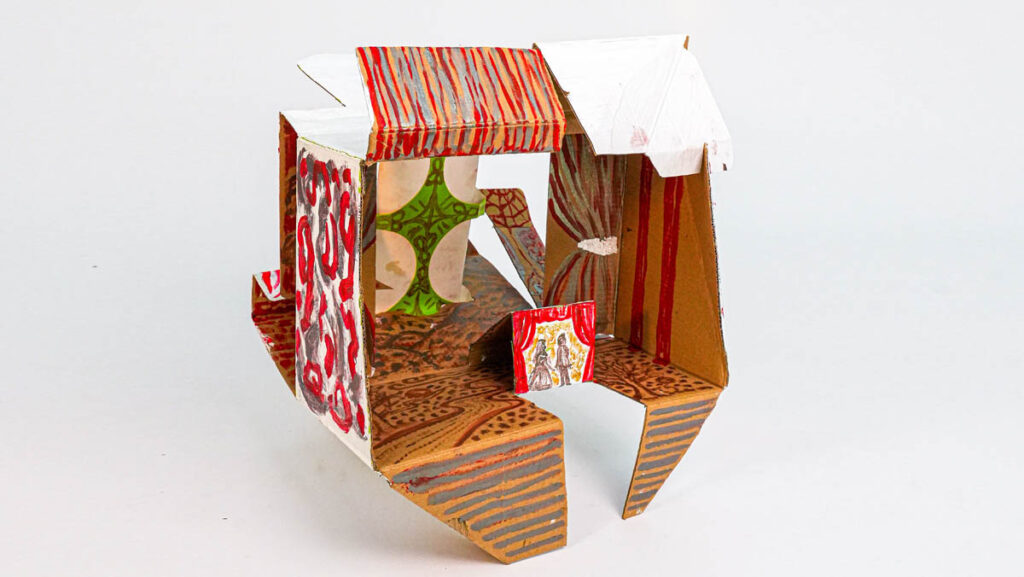
Bridges Edges is an interactive video installation that incorporates imagery from de Anda’s and Ahn’s US hometowns in proximity to bodies of water connected by bridges, including de Anda’s crossings of multiple ports of entry bridges along the Texas-Mexico Gateway across the Rio Grande/Rio Bravo River and Ahn’s crossings of the Golden Gate bridge near San Francisco over a strait connecting San Francisco to the Pacific Ocean; as well as his examination of various bridges across the US. Video imagery of these bridges is merged with time-lapsed footage of pedestrians crossing and inhabiting bridges of Venezia, and Berlin, and is projected along a corridor/passageway at artespaziotempo. As participants traverse this space from one end to the other, they may engage in augmented reality applications of “obstacles”, opportunities for exchange, or scenarios of potential freedom or promise. Through the lens of their smartphones, they may encounter virtual elements such as “trolls” or “sphinxes” regulating passage or structural details of bridges or architectural forms that they may virtually superimpose or merge with other surrounding architectural forms or surroundings “in real life”.
Combining contemporary concepts in exchange with specific cultural traditions, geographic and architectural spaces, and art and technology, when did the two of you begin your collaborative projects?
ID: I had the privilege of first meeting Eugene in early 2021 when I was invited as a Visiting Artist to develop an exhibition at Los Angeles City College. This was during the pandemic when new modes for experiencing artwork were being developed because people could not gather at events. As a faculty member, professor of interactive media, and innovative technology guru, it was suggested that I meet Eugene! He was immediately supportive of my work, especially my series of digital collages printed on aluminum, featuring imagined spacecraft built from farm machinery, from my family’s ancestral farm at the US/Mexico Gateway. He suggested why don’t we digitally animate these constructions in a way that they could be virtually interactive online and by using augmented reality applications designed by Eugene. This led to the project Revolutions Generators and the exhibition Mestizo Dispossessed which was presented in 2022 as a satellite exhibition for the Pera + Flora + Fauna collateral event of the 59th International Art Exhibition La Biennale di Venezia. Since that time we have collaborated for exhibitions in San Pedro and Los Angeles, California, USA; Mexico City; Tirana, Albania; Helsinki; Bath, London, and Stonehenge, England; Taiwan; and Kassel and Berlin, Germany.
EA: Yes, our work together began with exploring interactivity as a mode of experience. This remains the crux of our collaborative work to this day and in this installation.
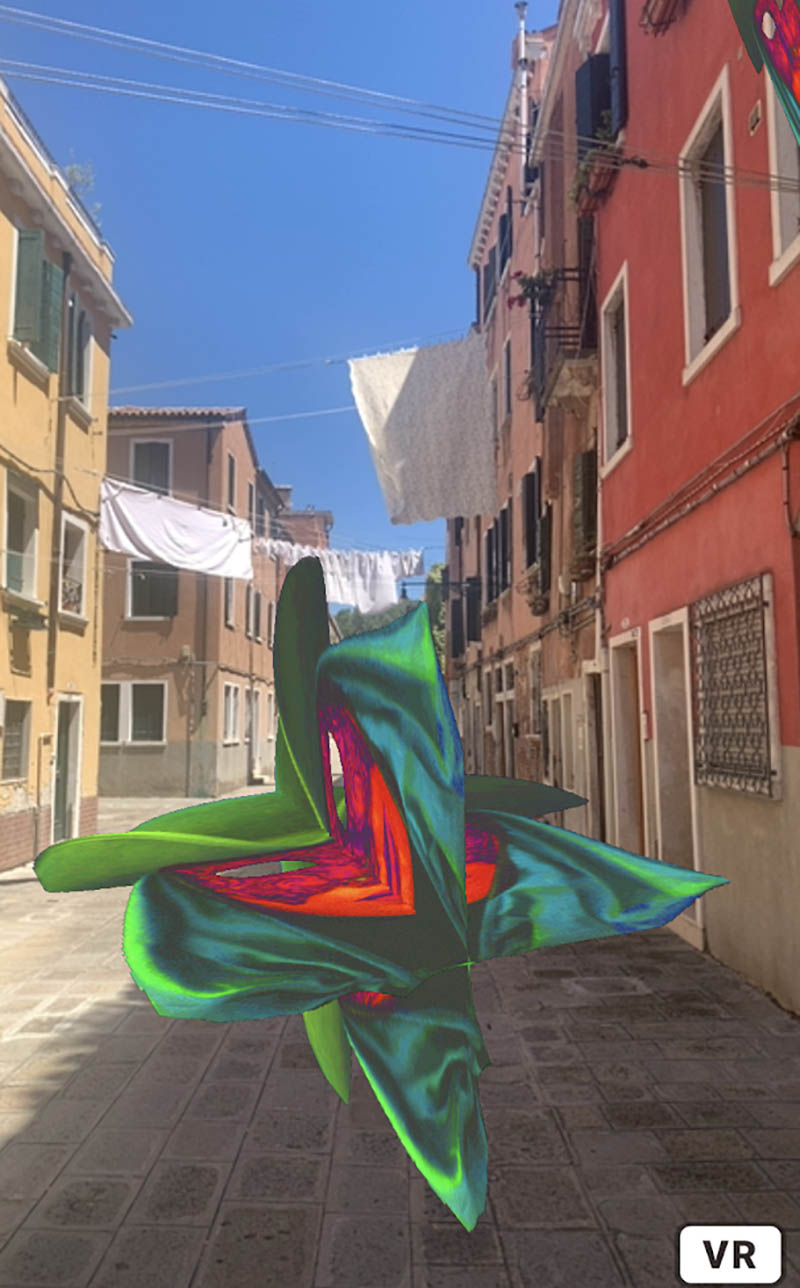
It seems that you feel strongly about the capacity of art to transform, to propose new ways of being and experiencing the world beyond language. Technology could be an ally to expand a concept, a new vision of reality, a new world. What do you think?
ID: Growing up with little knowledge of art history, in a multilingual family, as a former Museum educator, and a current teaching artist, has always been of great interest to me. Observing how viewers investigate and respond to an artwork in a museum, how nontraditional venue art participants may seem to respond to art, or how multi-lingual participants of art may process or respond to an artwork possibly within, and beyond their cultural familiarity, has influenced me to attempt to develop conceptually layered artworks with multiple points of entry for participants. Augmented reality applications allow participants to virtually animate and extend elements of traditionally analog experiences in an art experience.
EA: It’s certainly a big idea to ponder. If there is a new vision for reality and the world, I hope technology will help us apprehend it. The way we are using technology, I think, is an attempt to explore ways of reclaiming an experience that is sensory, spatial, present, and open to possibilities. The presence of technology in our art is not really about the technology itself. It’s more about experimentally framing ideas that we know exist but perhaps can not yet be seen in a literal way.
How did you learn how to incorporate new technologies into your projects?
ID: Growing up with science fiction, I frequently and playfully cite that Gene Roddenberry, the creator of Star Trek was born in El Paso, Texas, the same place I was, and how creatives may fantastically build worlds and describe techniques, concepts, and technologies that currently marginally exist but can develop into full-fledged, new, more common modes of experience for culture and art. Often I am interested in the philosophy of new technologies, how the public may perceive them, how they may function as new or unexpected tools for experiences and artworks, and how artists may influence these tools and technologies in mutant or unexpected ways. Again, within the history of my work, I have used sci-fi narratives and aesthetics, digital media, laser cutting technology, etc. Now, by working with Eugene’s expertise and coding, I have been able to learn more extensively about other new tools and technologies that we have incorporated into our projects, such as Drone camera aerial video footage, 3D/ VR image capture, Polycam for creating 3D models, Blender to edit 3D models, Adobe Photoshop (beta) for editing raw source images, and a range of AI tools and video editing platforms. For AR/VR app presentations, A-frame, JavaScript, Three Js, and HTML coding were used by Eugene for our web-based AR and VR digital interactivities.
EA: I’m interested in spaces that have not been colonized by rules, or are being decolonized from previous authorities. Either condition invites creativity. New technologies fascinate me because they are like wild places, wild animals. It’s not even about taming them. I think of it more like: wow, what might be possible in this wide-open situation? It takes a certain kind of sensibility to operate in that kind of environment. I prefer adventure.
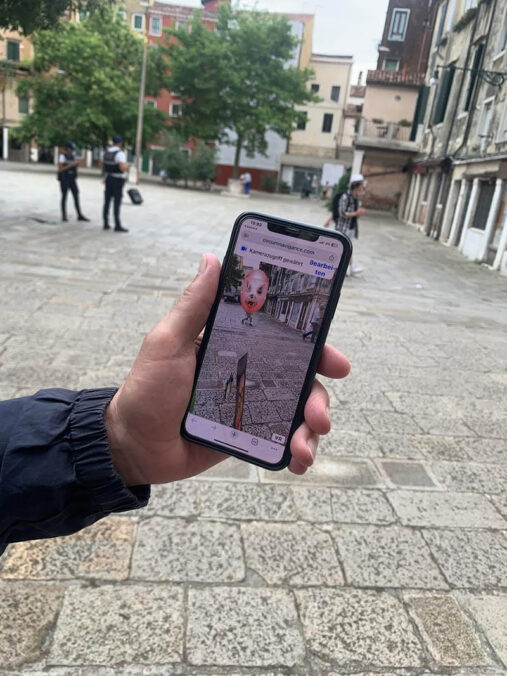
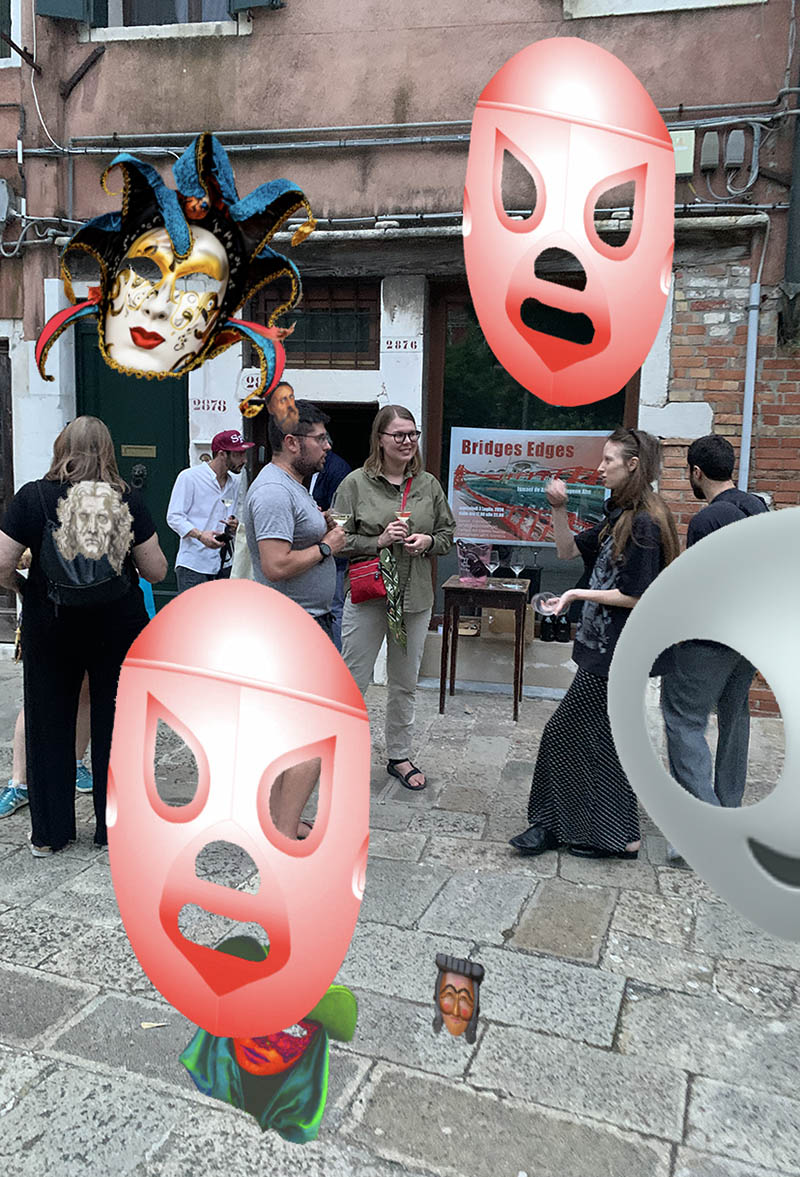
It seems that your projects act as a generator for public participation. What are some ways you would like to expand the participation of audiences in a gallery, in a museum exhibition, or in alternative spaces, to draw attention to unexpected connections and layered concepts to potentially re-imagine social, political, and economic realities?
ID: In the past, I’ve created site-specific works that incorporated present, physical interactivity among the participants. During the pandemic, this was not possible. With Eugene, incorporating augmented reality and virtual reality features has provided the opportunity for participants to activate the artworks together at a distance using a QR from any part of the world regardless of any boundaries of nationality, to try to make creative and accessible inroads to an art experience, where they can additionally take a part of the artwork with them wherever they go.
EA: Our collaborations started with a fairly simple question: What would it be like if the audience of the art work could make the artwork move off the wall? Without violating the traditional gallery rules of presentation, of course. The relationship between artwork and viewer fundamentally changes if so. The definition and possibilities of art work changes. The role and options of the viewer changes. Art becomes more like life, perhaps – more unpredictable, more energetically circuitous, more poetic if one chooses to recognize that.
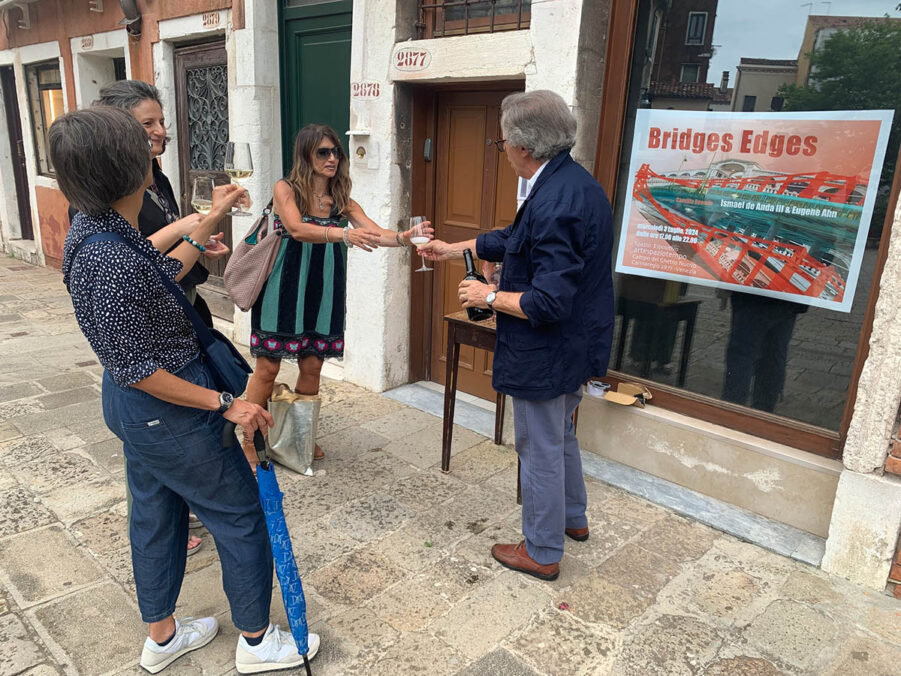
What does it mean for you to show your work in an environment like Venezia?
ID: It’s an honor to present our work in the incredible, art historic city of Venezia, during the 2024 Venice Art Biennale! For our exhibit Bridges Edges, we specifically made a connection to Venezia as the “City of Bridges“, featuring imagery of its structures and cultural iconography such as its winged-lion, Venetian masks, and nods to the city’s history with artists such as Titian and Da Vinci. It is also very exciting for me to have an exhibition in Cannaregio at the same time and near Jim Shaw’s “The Alexander Romances”, 2024, on view at Palazzo Diedo. I had the privilege to previously work as an art assistant for Jim and Marnie Weber, during my artistic journey. Also, as a graduate of CalArts (California Institute of the Arts), I am proud, delighted, and excited to see and experience first-hand all the amazing success, fellow Calartians, Jim Shaw, Mark Bradford, Beatriz Cortez, Lauren Halsey (all Los Angelinos), and Adriano Pedrosa, curator for the 2024 Venice Art Biennale, Stranieri Ovunque, all here in Venezia! It’s been a pleasure working with Paolo, director of artespaziotempo, in the historic neighborhood of Campo del Ghetto Nuovo Cannaregio! It has been wonderful meeting local artists, curators, and enthusiastic and encouraging members of the local neighborhood! We really appreciate you, Camilla, for arranging such an amazing location and venue for us!
EA: Yes, Venice has been very welcoming of our work. Many thanks to everyone who received this show. Italy in general has been very welcoming of our work. Showing our work last year in Rome and this year in Venice has shown me how deeply curious the Italian psyche is about artistic expression. Refreshing.
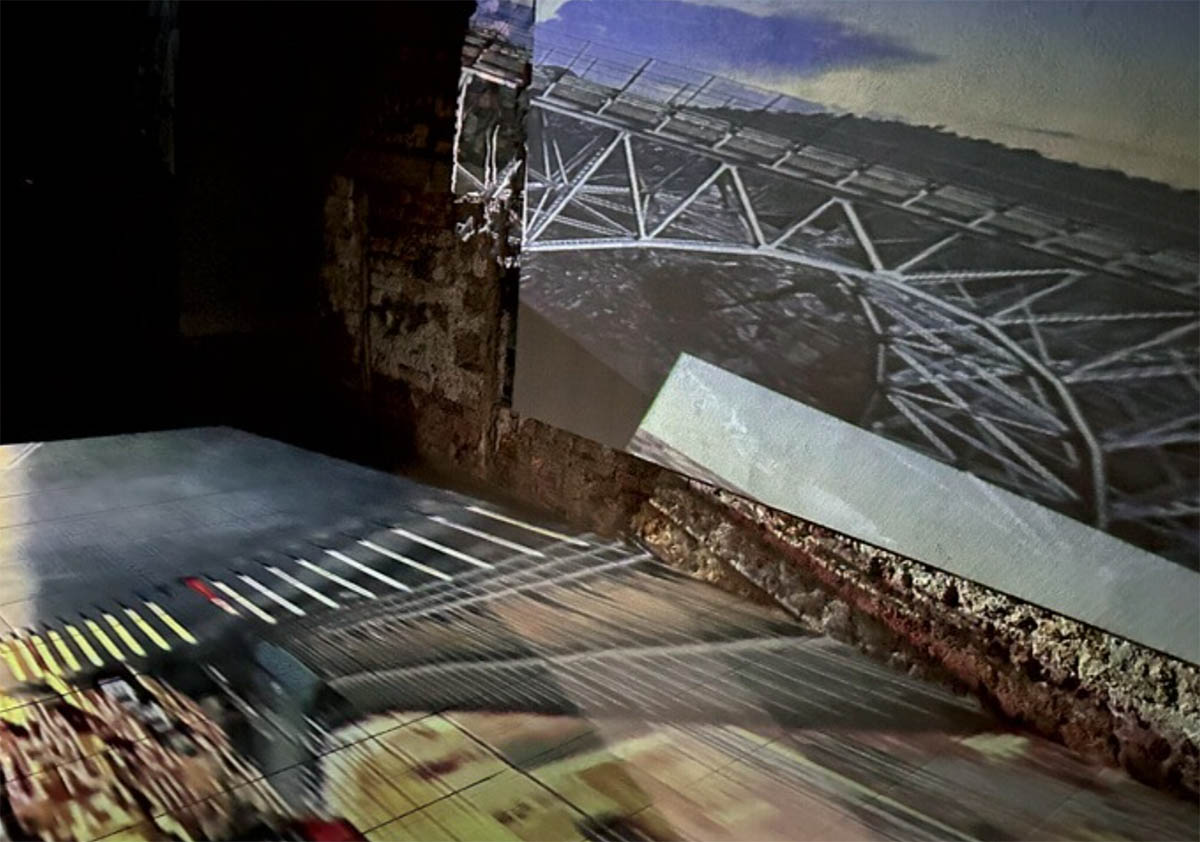
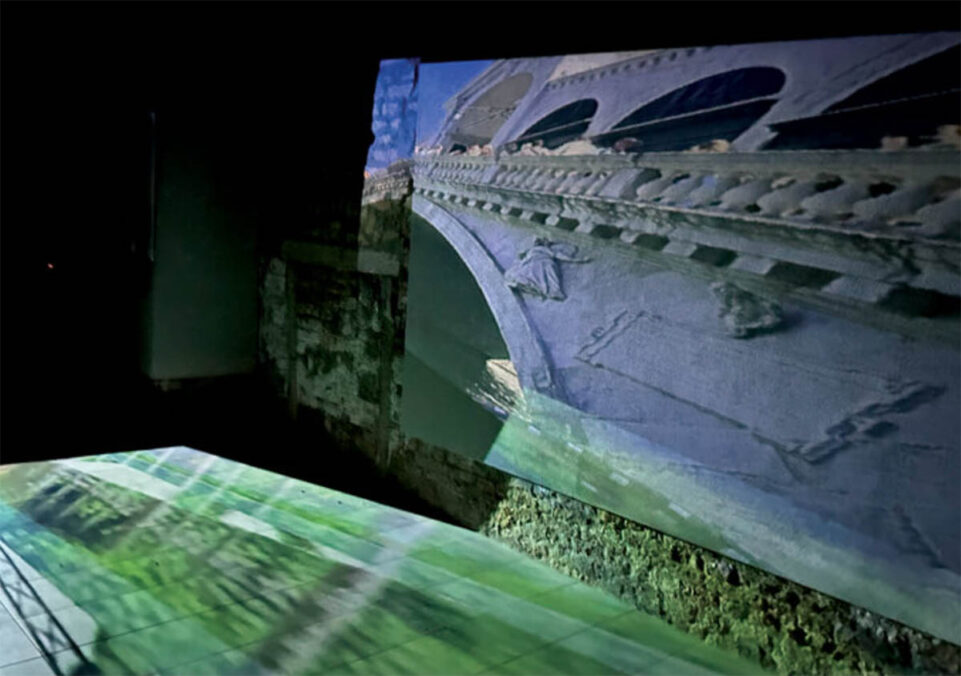
What is your relationship to the context of bridges, and the edges of places, environments, and identities?
ID: Growing up at the US/Mexico Gateway in Texas I spent much of my formative years crossing bridges back and forth between the US and Mexico. El Paso, Texas was once El Paso del Norte, a region separated into two countries. Bridges can connect, divide, and simultaneously combine edges of different, shared areas and parts. We were also thinking about how some art exhibitions are being curated to promote work by “marginalized” artists, however possibly defining marginalized artists as still being impoverished by being outsiders, not benefitting from being comfortably mainstream, or being on the “wrong side” of accessibility of a barrier or marginalize. We were thinking of a term to reframe such artists and blended cultures as instead of being on the disadvantaged periphery of a margin or edge as artists being on edge, or cutting edge, the latest or most advanced stage in the development of something. Eugene’s passion and interest in geographical location and the physical structure and monumentality of various bridges throughout the US was extremely influential for this project.
EA: The theme of this exhibition has a strongly personal nature to me because for decades I have explored bridges as part of a personal practice of exploring cultural poetics. This exploration includes climbing suspension bridges. There are a few images embedded within the exhibit that are documents of my activities, so if you look carefully beyond the aesthetics and spectacle of the work’s presentation, there are some truly rare perspectives being shared. The stories behind those perspectives are also unusual, and they definitely would speak to all of the exhibition’s themes.
Can you further describe your exhibition Bridges Edges presented at artespaziotempo in Venice, Italy?
ID: In preparation, and before arriving in Venice, live video of bridges and people crossing them, in El Paso/Ciudad Juárez, the Golden Gate Bridge, bridges over the Los Angeles River, South Pasadena, California, throughout the US, Berlin, and bridges in Venezia from the point of view of gondolas were recorded for this project. This footage was compiled into projected vignettes of overlapping painterly video sequences. The video features were projected down artespaziotempo’s main entrance which has a long corridor-esque front chamber. Videos were projected lengthwise to have the sense of crossing a long bridge. Visitors could stand on, cross, “swim across”, or “fly over”, these bridges. We were also thinking about Fairy Tales and how often there were “trolls” underneath, or with sphinxes with riddles regulating these passageways. How there were “heroes“ and “villains” in these stories and how sometimes these characters could be both. Augmented reality applications were developed featuring “trolls”, “heroes”, and images of bridges found in the videos, that could be viewed through the camera of smartphones, super-imposed and combined within the footage of the interior of the video installation or outside the gallery or with environments anywhere in the world wherever participants wish to evoke this imagery, which can also be captured as screenshots or video clips that can be shared.
EA: I might add that the augmented reality apps present cross-cultural forms to act as edges and bridges that can transcend each other and invite a new understanding of how we as people mythologize obstacles and access.
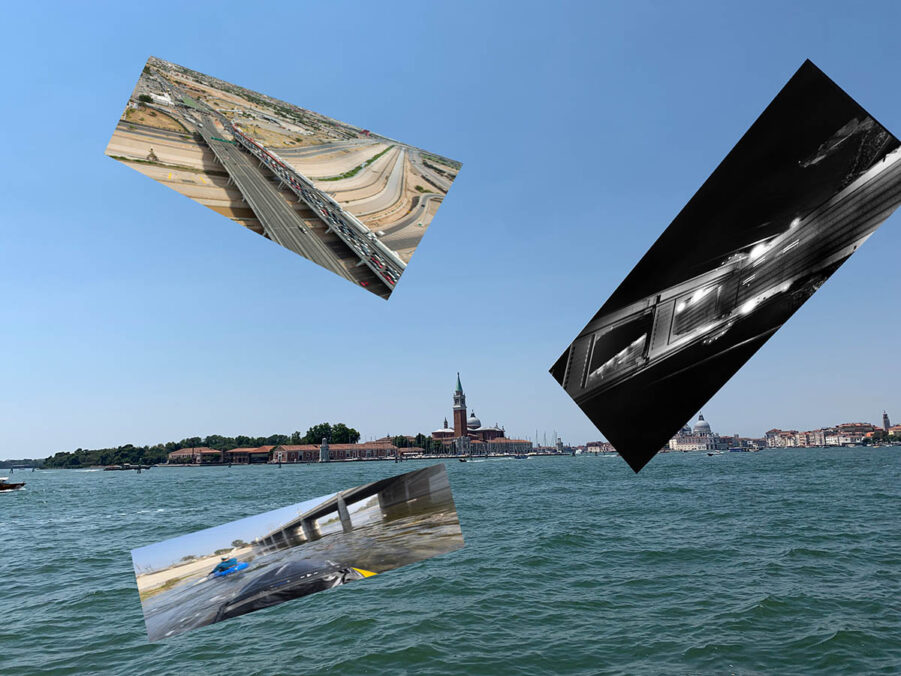
Can you talk more about the participatory, interactive aspect of the work?
ID: Upon our conversation of re-combined, bridges, “trolls”, and “sphinxes”, Eugene coded the augmented reality applications, Via Per Infinitutto (Way to Infinity), Machere Del Misterio (Mystery Masks), and Chimere Venezia (Chimeras Venice). Via Per Infinitutto (Way to Infinity), features bridges found in the projected video installation. Machere Del Misterio (Mystery Masks), features flying masks including Venetian masks, Luchador masks, Korean Ha Hoe dancers, the face of Da Vinci’s Uomo Vitruviano, and the face of Venetian painter Tiziano (Titian). Chimere Venezia (Chimeras Venice), features mutant re-combined Chupacabras, Golem, Dol Hareubangs Jeju sculptures, and Winged-lions of Venice. This imagery can be recombined with the projected footage within the installation or anywhere the participant travels, inhabits, or crosses.
EA: Well, every projection in the exhibit can be thought of as a wall made up of moving images. Each wall has a way to be engaged so that it becomes a passageway, accessing a new way of thinking about or experiencing something, definitely the space, and also generally one or more ideas. The more a visitor to the exhibit participates in this ritual, the more successful they will be in discovering the wall is actually also equally a passageway. With augmented reality apps, the viewer has so many ways to explore this ritual, they lose their identity as a viewer as they become more of a director or a wielder of the art work. In many ways, our take on interactivity is akin to how a subject in a painting might break a so-called fourth wall and look directly at the viewer. That invitation to dissolve the boundaries between art and observer is at the heart of our work’s participation and interactivity. Playing with “The Fourth Wall,” that’s our nod to masterful Italian painting.
Exhibition: Bridges Edges
Artists: Ismael de Anda III & Eugene Ahn
Curator: Camilla Boemio
Ismael de Anda III – www.instagram.com/ismaeldeandaiii/
Eugene Ahn – www.instagram.com/onethousandlifetimes/
Camilla Boemio – www.instagram.com/camillaboemio/
Address and contact:
artespaziotempo
Campo del Ghetto Nuovo Cannaregio 2877 Venezia
www.artespaziotempo.it




